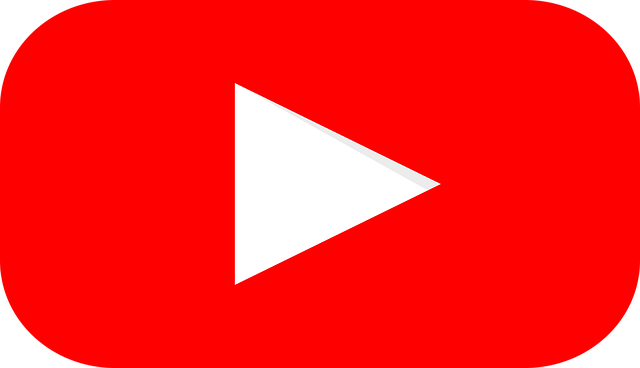Are You Ready For Video On Demand?
There’s been lots of buzz in the Internet marketing community over Joost lately. Joost is that video on demand site I hadn’t heard of before last week and now suddenly everyone can’t stop talking about it. It seems they have a big announcement for us — they’re almost ready to open their site up to the public. I’ll try to look excited.
Liz Gannes announced on the obnoxiously-named NewTeeVee blog that Joost has opened to the public, but only for existing users. The rest of us are out of luck unless you leave Liz a comment on the blog and she takes pity on your poor Joost-less soul.
If you have no idea what I’m talking about, Joost is a video upload site that lets anyone with copyright ownership create branded channels and use them to broadcast to the world. It’s the more professional, non-sue-able version of YouTube. Right now, Joost, like its competitors, is toying with how to monetize its content, testing out pre-, post-, and mid-roll ads.
The other big Joost news is something David Clark mentioned during last week’s Dreaming of Disruption keynote. David told me (and the rest of the audience, I suppose) that Joost had signed advertising deals with big name brands like Coca-Cola, Nike, Sony, IBM, Proctor & Gamble, Kraft, General Motors, Warner Brothers, Visa, Intel and lots more companies that would leave you totally impressed.
This all sounds very exciting for Joost. From what I hear there’s a great community on the site and they seem to be reasonably far ahead of the pack touting a "piracy proof Internet platform".
The hype about Joost isn’t so much about where it’s at now, but where it’s going next. Everyone you don’t know but are supposed to respect is speculating that Joost will open the gates to personalized television via video on demand and change Internet marketing.
I just have one question.
Are Internet marketers ready for this?
I heard a statistic last week that said by 2008, 43 percent of all households will have video on demand in some form. My awesome math skills tell me that 43 percent of all households is almost half. That means as someone engaging in optimization and Internet marketing, you need to figure out how this is going to affect you.
Will you allocate some of your ad budget to online video advertising? If so, where will you take it from? If you’re a publisher, what kind of content are you producing? Two hour movies or clips for users to snack on? For advertisers, what kind of ad format are you using? Do you have 10 seconds before a 40 second clip to make your pitch or do you have 30 seconds in the middle of a 20 minute video?
The key thing content creators need to realize is that with on demand it’s all about user choice. On demand advertising needs to be a product, not entertainment. Yes, advertising is content. It has to be designed to take you somewhere else. The content must be better targeted towards users and be worthy of their time. When you have the power to watch whatever whenever, it means you don’t have to watch Dancing With The Stars simply because there’s nothing else on. You can watch that episode of [insert your favorite TV show here] that you missed this week because you were stuck at work.
You have to know when to target your ads. As much as I hate to quote Mark Cuban, he had an interesting post a few weeks using comScore research to show when people watch online video. The most popular time for online video is during the work week from 10am to 5pm. In fact, Mark found that almost 50 percent of all video viewing takes place during the weekdays from 7am to 5pm. If you’re thinking about advertising on branded Internet channels, that’s important information to know.
I’m not a huge on demand supporter, but one part that I do like is that it may ultimately improve programming content. When users have a choice of watching anything they want, whenever they want, it forces content producers to be better. You have to engage viewers, not talk at them. You have to give users what they want instead of what you want. During his keynote speech, David argued that though storytelling has mattered since the dawn of men, somehow it gets left out of every aspect of media. Joost is supposed to change that.
I know on demand is sounding like a whole lot more work but it does have its positives, like the targeting and the accountability that goes with it. Advertisers can study customers to get an accurate glimpse of where they hang out online, what they’re interested in, what channels they’re watching and then put position themselves there. You’re putting your ads in front of a smaller, more targeted demographic. At the end of the day video on demand may equate to much less wasted money spent targeting people who weren’t interested in what you had to offer in the first place.
By all accounts and pre-processed hype, it appears that video on demand is coming and Internet marketers need to learn to take advantages of the avenues it creates. At the same time, don’t forget the traditional stuff.
26,000+ professionals, marketers and SEOs read the Bruce Clay Blog
Subscribe now for free to get:
- Expert SEO insights from the "Father of SEO."
- Proven SEO strategies to optimize website performance.
- SEO advice to earn more website traffic, higher search ranking and increased revenue.

One Reply to “Are You Ready For Video On Demand?”
You won’t be ready for Video on Demand if you
don’t have a camcorder. I have had mine 4 years.
LEAVE A REPLY









